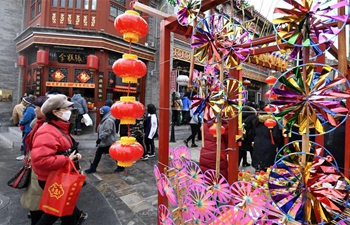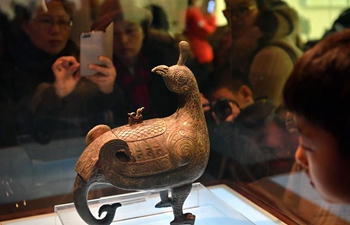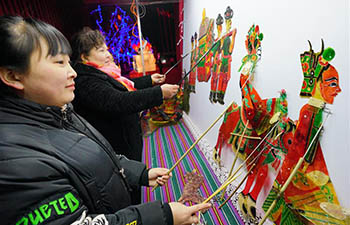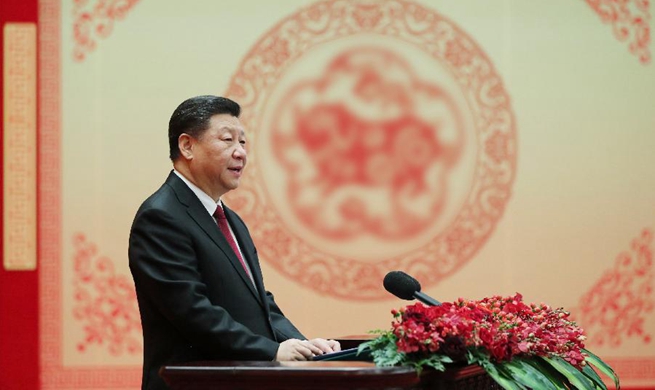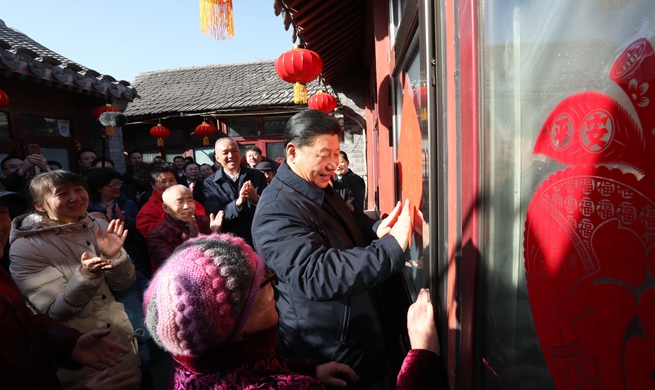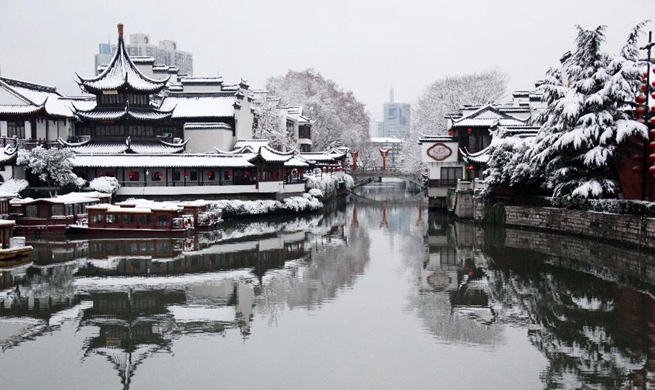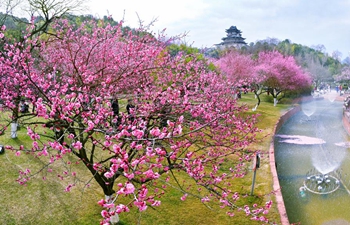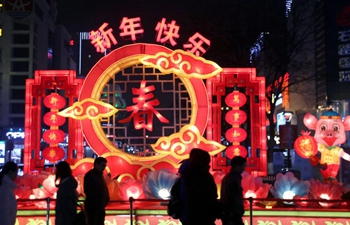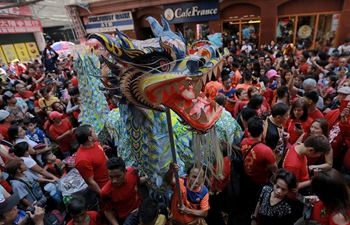HARBIN, Feb. 8 (Xinhua) -- Spring Festival is coming, and Ren Jiqing is busy making matryoshka dolls in his workshop.
"Matryoshka dolls are quite popular during the holidays, and retailers have big demand for the dolls," Ren said. "Some even reserved the dolls for the Labor Day holiday this year."
Ren, 57, is an owner of a matryoshka doll factory in Yimianpo Township in northeast China's Heilongjiang Province. He has been doing the business for almost 20 years.
Yimianpo is a major production base for matryoshka dolls in China, with annual sales volume reaching nearly 15 million sets. In the early 20th century, many Russians settled in the town, once a critical point on a railway line in the northeast, and brought the craftsmanship of producing matryoshka dolls, which was passed on to Chinese residents.
Ren's factory covers an area of more than 200 square meters, and handles complete doll-making procedures, from wood drying, cutting and polishing to drawing and packaging.
"Though the dolls are small, the procedures are quite complicated," Ren said.
In Ren's factory, finished and half-finished dolls fill the shelves, and workers are busy tinting, drawing flowers, adding blusher, and painting eyebrows and eyes on the dolls.
"My dolls are all about hand-made craftsmanship," Ren said. "Every stroke is done by hand rather than machines."
Xie Lihua, 40, has been painting the dolls for 13 years. She started by painting flowers, and focused on the doll eyes as her skills matured.
"I can make about 170 sets of matryoshka dolls a day," Xie said. One set includes 10 small dolls.
Yimianpo Township is situated near forests, which provides abundant raw materials like birch and basswood and contributed to the explosive growth of the industry. In the 1950s, locals began to make "Yimianpo matryoshka dolls" by imitating the styles of the Russian dolls, and the industry soared in the years to follow.
Liang Xianchun, 50, is one of the pioneers making the dolls. In the 1990s, Liang, who learned painting in college, was fascinated by the dolls and began to engage in the sector.
"Because I learned painting, I started to paint the dolls myself," Liang said.
Liang also employed several people in Yimianpo to paint flowers and add colors to the dolls. But scale and sales were quite limited at first.
"It took seven or eight years before sales increased significantly," Liang said. The success also drove many more people in the township into the business.
Currently, Yimianpo has more than 60 doll-making factories with more than 2,000 people employed in an industry with an annual revenue of about 45 million U.S. dollars. The dolls are sold in a variety of tourist cities and on e-commerce platforms.
Traditional matryoshka dolls usually appear in the form of Russian women, but as time went by, the dolls have taken on different looks. In the factories, dolls in the shape of Minions, Peppa Pig and fortune cats are everywhere.
"We change the shapes in accordance with market demand," Ren said.
Last year, Ren's factory raked in more than 1 million yuan (148,600 U.S. dollars) in revenue.
"My new year resolution is to bring the dolls' quality to the next level," Ren said. "I hope more people will love the dolls in the future."




